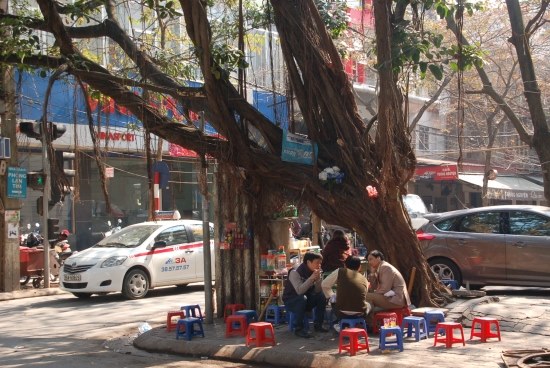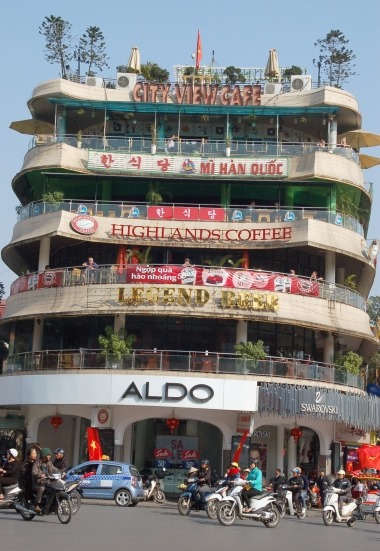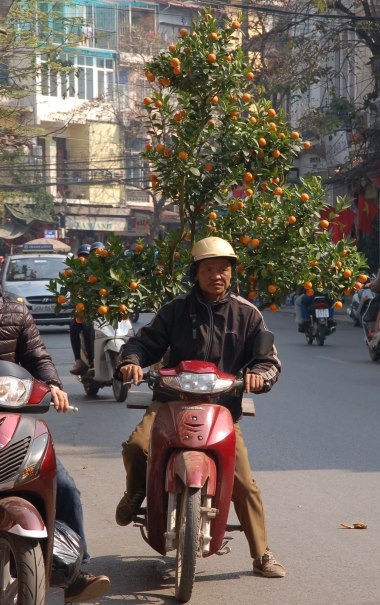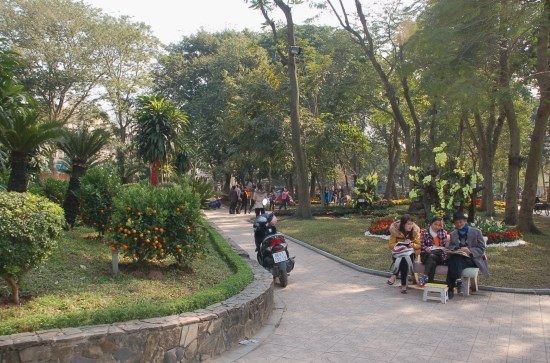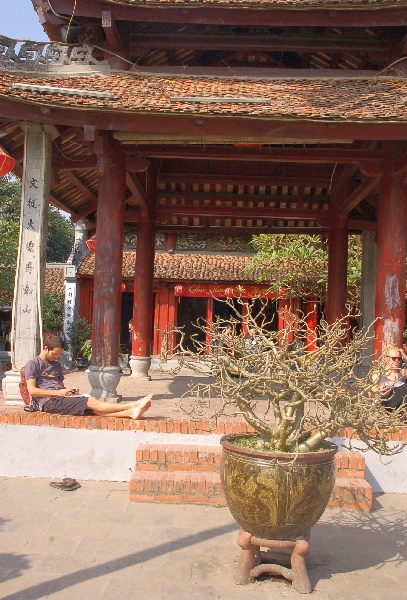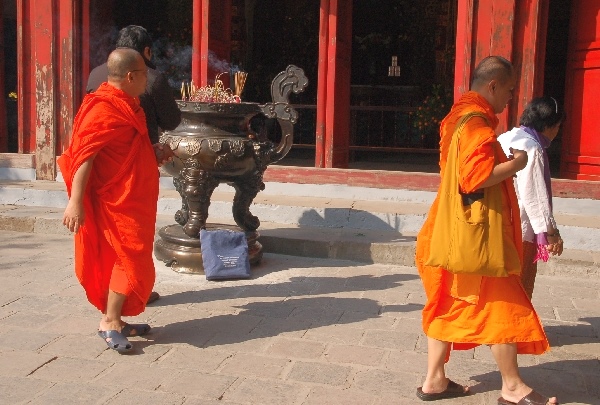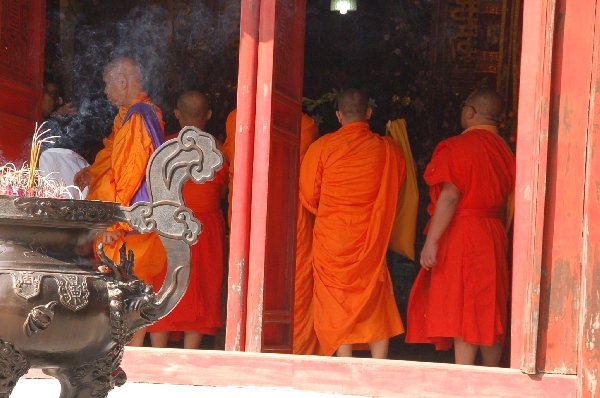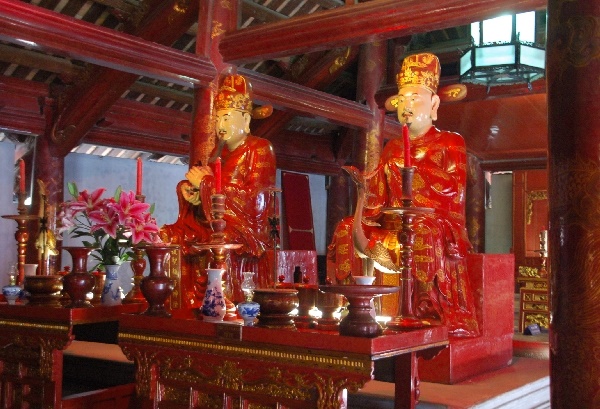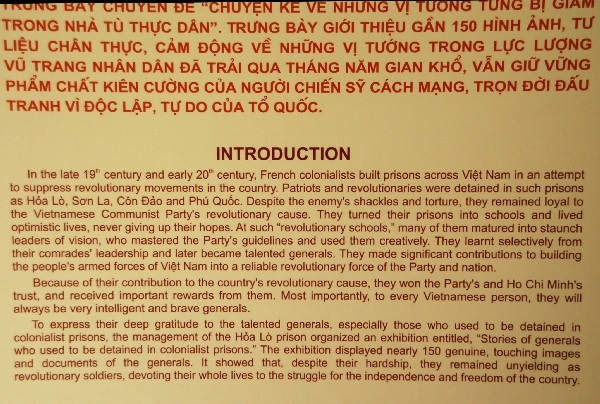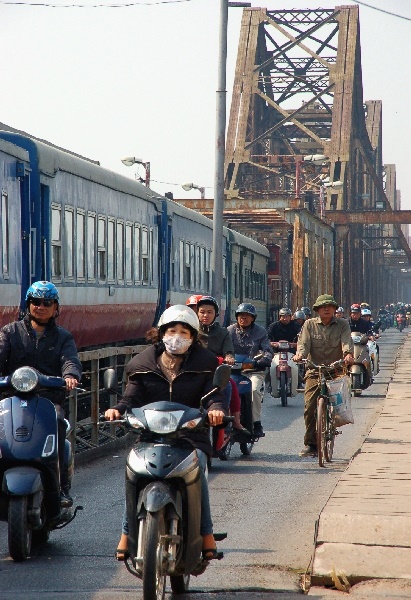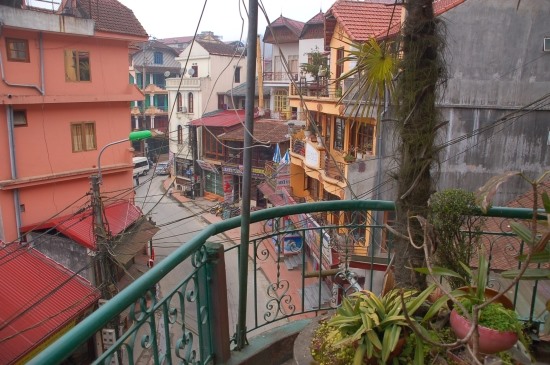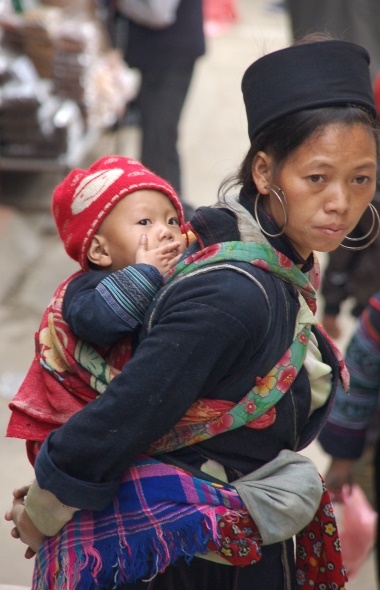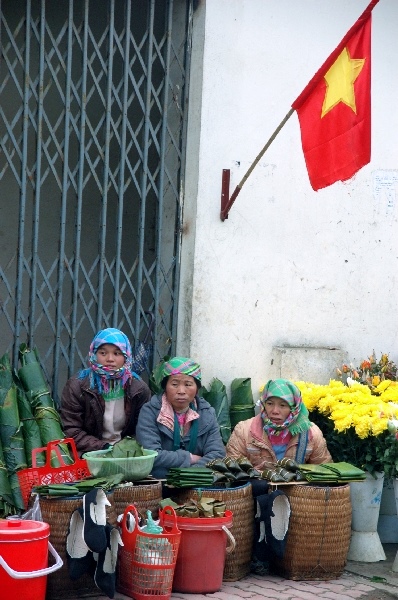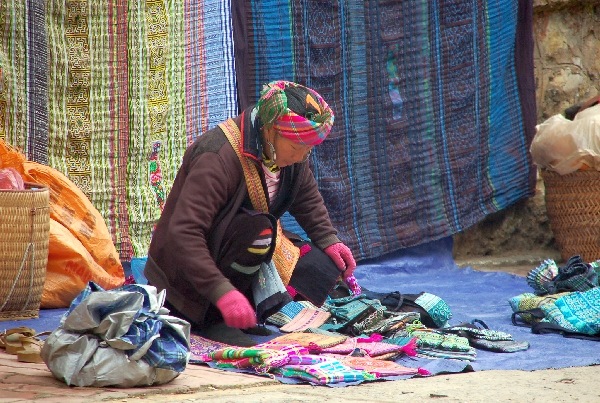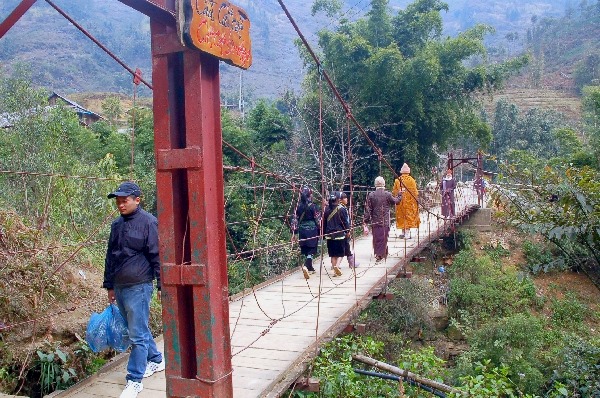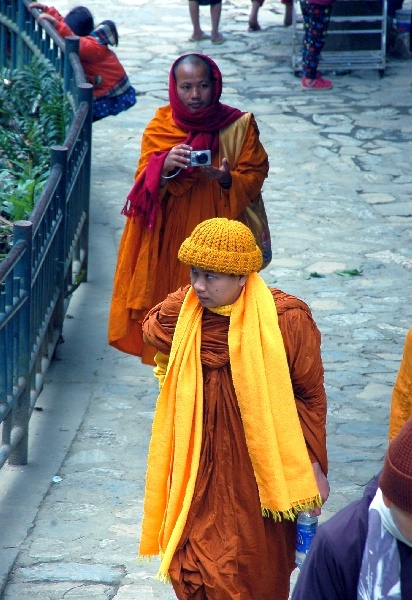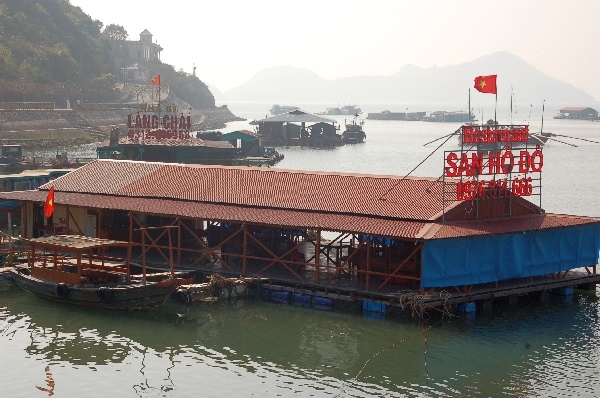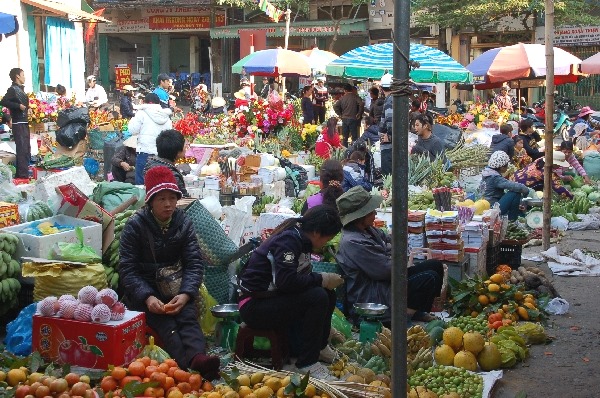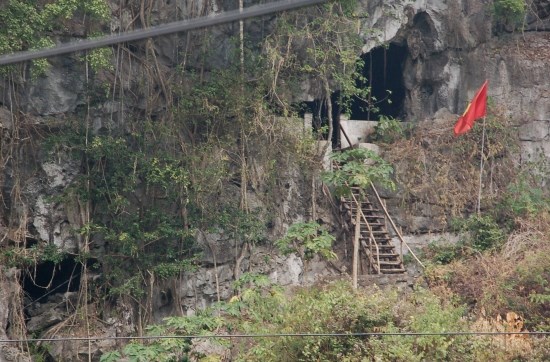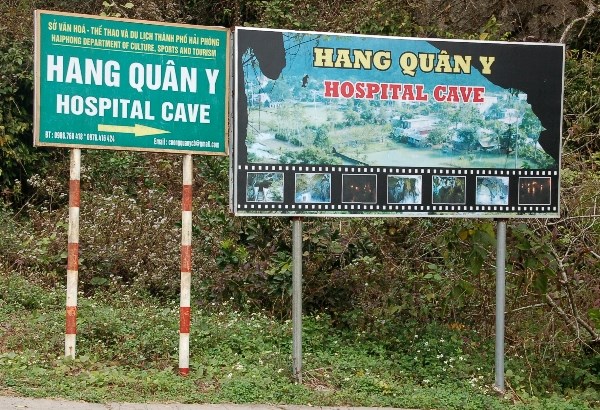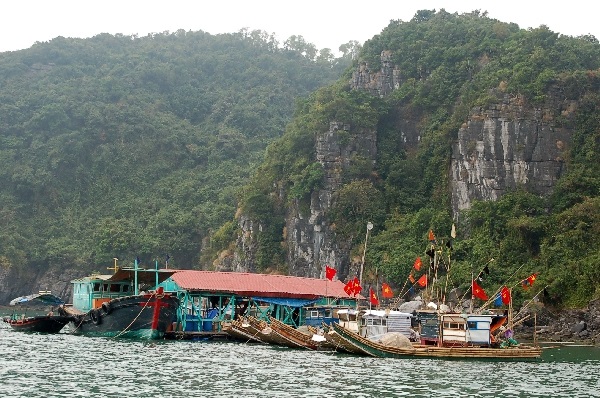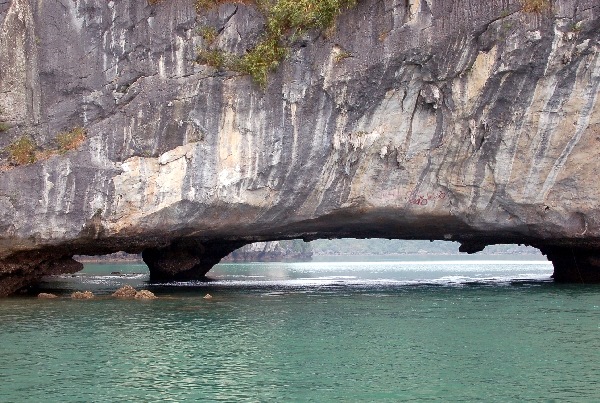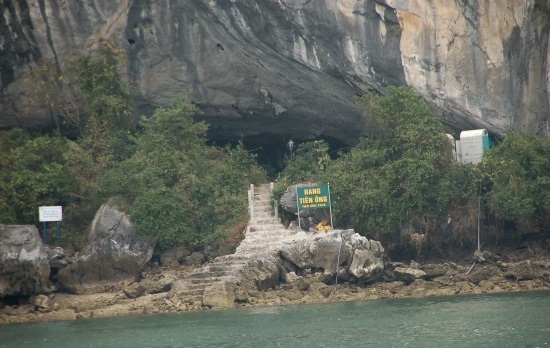World traveler Clown Tom Bolton
Adventure stories & photos

Tom’s travels to Northern Vietnam
Hanoi, Sapa, Catba Island, Halong Bay, Catcat village
Arrival in Hanoi, Vietnam
Mid Jan. to mid Feb. 2014 I went to Vietnam starting in Hanoi and eventually departing from Ho Chi Minh City which is still more commonly known as Saigon. I had traveled a lot in southeast Asia over 2 decades ago but not Vietnam, which was just opening up to tourism back then. As an American, I of course wondered how I would be accepted in light of the legacy of the war. It might seem like a paradox since one sees constant reminders of the struggles of the Communists against the French and Americans but I felt no ill will at all and a ready acceptance of American culture.
Vietnam has also embraced international business and the use of dollars as the international currency yet the lack of overt poverty clearly shows the Communist ideal of spreading out the wealth to the benefit of all. And as a tourist I felt very safe and free to enjoy myself without any worry about being targeted for hassles or bribes. Freedom? Sure felt less likely to be scrutinized by anyone than in the USA or Europe.
Hanoi Old Quarter; mopeds & flags
The following photos show typical street scenes around the old quarter and surrounding neighborhoods. The national flag is often displayed but even more so during the lunar New Year known as the Tet festival which is by far the biggest celebration of the year. Tet was to start in more than a week but many decorations were already up. What is also clear from these photos is that motorbikes (mopeds and motorcycles) are by far the main means of transportation.
Lunar New Year decorations
These decorations were definitely for the Lunar New Year. Having grown up in America where the anti-communist propaganda was strong for so many years, it was a bit of a twist to see the hammer and sickle displayed with doves as a coherent symbol of peace.
Banyan trees adorn city
Typical around Hanoi are the many banyan trees with their tendrils hanging like something out of a fantasy movie. Another thing that I would find to be popular all over Vietnam is the use of really small stools. I guess they just take less space to store and are often set out on the sidewalks in the evening so more people can socialize over food or drink.
Typical Hanoi buildings
Below left, a lot of typical 4 or 5 story buildings with a business on the first floor or two and residences above still remain in Hanoi. Such places were much rarer in Saigon as urban renewal has given way to big apartment blocks with dozens of levels or business centers.
Commercial buildings & advertisements
Hanoi doesn’t lack for commercial property either and one will see plenty of well-known brands advertised. An English or foreign name on a product seems to be desirable even if it is a local product. Obviously the communists have adapted many marketing strategies form the capitalists.
Colonial architecture remains
There are many distinctive French style colonial buildings, typically used as government offices, museums, institutes or schools.
Old Quarters’ Cathedral
One of the more outstanding landmarks in the old quarter is the Cathedral that is an orientation point to many small side streets filled with cheap hotels, hostel and travel agencies catering to backpackers and foreign tourists.
Bicycle & carts for vending
Ones sees mobile food-carts but many street vendors make due with bicycles. Although it was winter and cool in the north, there was no lack of tropical fruits.
Hanoi vendors with yoke carrying stick
Something I would see throughout Vietnam was yokes or carrying sticks. They were often used by street vendors to transport their wares. Two large baskets would be suspended from a pole slung over a shoulder or over the back of the neck.
Transportation of goods & tourists
Of course motorized transportation is even more practical and even on 2 wheels; one can move a lot of goods. Bicycle rickshaws seemed to be mostly for the tourists. The quickest way to get around for less than a taxi is to hire a guy on a motor bike as long as you know the going rates and have nerves of steel to wind through the traffic.
Flowers popular in Hanoi
There seemed to be a great cultural appreciation for flowers and plants. Like in Europe of old, Hanoi has many clusters of shops selling similar products. Here were dozens of plant and flower shops together although plenty of what you see here is plastic rather than natural.
Shops for Tet decorations
I’m not sure what these shops sell other times of the year but offerings of traditional decoration for the Tet festival were abundant. But even Hello Kitty or Psi kitsch was available and if in red and gold then it fits to the lunar New Year.
Sapling branches & Kumquat trees luck bringers
Another bringer of good luck is cuttings of saplings with their flowers just starting to bud. And everyone needs a new potted kumquat tree for Tet. They are small like bonsai but carry a surprising amount of fruit.
Burning offerings wishes for coming year
Another tradition is to burn offerings representing what one wishes for a prosperous New Year. Here small boxes like gift wrapped presents are offered on the street. Fake money is also popular and I hear that people even make piñata like paper representations of fancy cars or motorbikes. Guess if you want to get lucky then why think small?
Hoan Kiem Lake, Hanoi
One of the best known landmarks in the center is Hoan Kiem Lake. It doesn’t look particularly clean but is surrounded by parkways and garden and wide, tree line boulevards. There is a sizable temple Ngoc Son on the NE corner of the lake reachable by a small bridge seen here top left as well as this picturesque pagoda on a small island to the right.
Ngoc Son temple
Entrance to Ngoc Son temple. And view towards the south side of the lake from within the temple. The pagoda was a perfect setting to just chill out and relax or to plan out where one was off to next minus the constant hectic of the traffic.
Hanoi Temple scribe
This is a scribe/calligrapher who writes with the old Chinese style characters. The old script is not religious in itself but often associated with religious writings from the past. During Tet, many people will go to a temple or other place where they will find a scribe to produce a sign with wishes for prosperity written in the old script.
Orange robed monks get attention
Orange robed monks were definitely a rare site compared to a country like Thailand but when one saw them, they were likely snapping some photos with a cell phone at some temple or tourist attraction. Monks passing back over bridge; not only a photo opportunity for me but for many locals (who are BIG camera bugs) as well.
Hoan Kiem Lake Turtles
The strangest thing I saw at the temple was a display and accompanying sign about the Hoan Kiem Lake turtles. Not sure why such a thing was in a temple unless there was some kind of religious significance. They had a stuffed turtle in a display case. The sign was in Vietnamese, French and English and referred to the turtles as tortoises. I assume the mistake in translation was the similarity to the French word which doesn’t differentiate – and the French involvement predates the American’s. In English, of course, tortoises are turtles that live primarily on land rather than in water.
More Hanoi temples
There were a lot of temples in Hanoi like this one that one would almost overlook from the street. And all of the Buddhist temples I saw in Vietnam were open so that one could just walk in. One often saw people burning incense or praying yet even the locals never took off their shoes; something strictly controlled in Thailand. The styles were very diverse, from the mundane to spectacularly gaudy.
One Pillar Pagoda near Ho Chi Minh Museum
This was a small but very cute pagoda that is well visited since it is located right between Ho Chi Minh’s Mausoleum and the Ho Chi Minh Museum, two secular landmarks that are almost sacred spots as Ho Chi Minh is revered as the father of the modern nation of Vietnam. Known in Vietnamese – although it has supposedly gone through a number of name changes – is Chùa Một Cột. In English it is referred to as the One Pillar Pagoda. I question whether or not there are no other pagodas in the country built on one pillar like the sign claims but it is so iconic that everyone will know where you mean. What could be misunderstood is the sign saying no shorts. Of course it was requesting modesty but I wondered if anyone ever removed there short and went in with no pants in response.
Hanoi Temple of Literature
The biggest temple complex I saw in central Hanoi was the Temple of Literature, which was dedicated to the country’s best writers and academics. Within the complex was a ceremonial drum in a pagoda. Many temple building now containing artifacts, so it seems to serves primarily as a museum.
Scribes across from Temple of Literature
Across the street from the entrance to the Literature Temple was an area set up for the Tet holidays with a dozen or so tents to cover booths where calligraphers would scribe messages of prosperity on scrolls. The scribes all wore traditional robes and I wondered if they all had a religious association independent of being monks since it seemed comparable to having people writing bible verses in Latin, which I would associate with the Catholic Church.
Ho Chi Minh Mausoleum well-guarded
This is one side of the Ho Chi Minh Mausoleum. One can walk across the lot to where the potted trees are but there are lots of uniformed guards to keep one from getting closer. Supposedly, Ho Chi Minh didn’t want such a memorial because he wanted to emphasize the tenants of communism and national solidarity rather than become a cult figure. Obviously, his admirers had other ideas. Police marching around the perimeter of the mausoleum area seemed as stern as the white uniformed guards.
Ho Chi Minh Museum
Nearby is the large Ho Chi Minh Museum that contains quite a lot of odd exhibitions many of which didn’t seem to have much to do directly with Ho Chi Minh. But he is so revered as the father of the Republic that virtually every aspect of life was somehow affected by his policies.
Vietnam Military History Museum
Halfway between the old quarter and the HCM Mausoleum is the large Vietnam Military History Museum. There is an old tower and the main museum building and in the courtyard a good collection of tanks, aircraft and canons captured or shot down from the Americans. The majority of displays pertained to the conflict with the French and Americans. But what one realizes is that the history of Vietnam is a series of armed conflicts with many neighboring invaders going back millennium. Outlasting and repelling the Americans is something they are proud of but in another context it was just one more war out of many.
Notorious Hanoi Hilton
This is the place Americans called the Hanoi Hilton and is synonymous with cruel treatment of prisoners. A good part of the complex has been torn down but what remains is a stark reminder of what conditions the locals suffered under the French who actually built the prison. Rather than downplay the stress it must have been for American POWs locked up here, it detailed the even crueler conditions imposed by the French on locals for being nationalists in their own country as opposed to the Americans who were foreign invaders. The conditions for locals shackled to a slat as shown by these figures was simply medieval.
Dog meat trade in Vietnam
Cruelty isn’t just limited to war. The trade in dog meat is big in Vietnam where it is considered a delicacy. Although some Vietnamese do keep dogs as pets, these ones being sold on the street were almost certain to end up as someone’s meal. I was told that letting dogs or even cats to run free on the street was a sure way to lose them. Some even get snatched off the end of a leash or from people’s arms, often by thugs on motorcycles. Dogs disappear from all over southeastern Asia and end upon the Vietnamese market. Thankfully, not everyone there accepts this practice and dog snatchers have been known to get beaten to death when caught.
Mash-up of party loyalty and New Year’s celebration
Above the entrance to this government building is a Happy New Year’s greeting. To the right is a typical propaganda image saluting the images of Ho Chi Minh and communist followers.
Propaganda posters
There were at least 4 branches of a gallery that specialized in reproductions of old propaganda posters. The themes were often about the armed conflict but often nationalistic appeals to support people’s rights or to support industry or agriculture to boost the country’s well-being. I found the graphic designs to be very stylish and thought to buy some of the smaller posters as gifts but didn’t want to drag them around for the next month. Luckily, a tourist mentioned that there was a branch of this gallery in the main tourist street in Saigon, so I could hold off on my purchases.
Souvenir shops
This is always a quandary for me although I don’t buy many souvenirs. One doesn’t want to drag stuff around and it can be costly and risky to send by mail. Often one finds the same kind of souvenirs all over the place and can wait until the end of a trip but you never know exactly which will be the things you liked but never find again. One sees lots of lousy t-shirts and other junk for sale but nicely made bronze or porcelain figures or inlaid lacquered boxes were nicer but not inexpensive.
I didn’t end up buying any but found the puppets to be interesting. Most Asian countries seem to have some tradition of puppetry but what seems to be rather unique in Vietnam is that the figures are often made to float on water. There is then a backdrop to hide the puppeteers but they themselves and the puppets are set in a pool of water and manipulated by stiff wires. I found the lacquer ware to be beautiful but one of those things one has little use for at home. Like how often do you have guests over where you need a fancy bowl for nuts or snacks?
Hanoi travel agencies
As Vietnam’s tours industry has exploded so has the numbers of travel agencies. Many seemed to be small operations; middlemen that most likely just book you onto a bigger place’s tours. Inevitably this raises the cost and lowers the reliability of know exactly what one is getting. The main destinations offered in Hanoi shops were the city of Sapa and Halong Bay or the close by Catba Island. I would go to both of these places but independently.
Traditional water-puppet theater
This was a theater exclusively set up for water puppet shows. There was also a water puppet stage set up at one museum I went to but I didn’t want to wait around for the next performance. In the end, I never did get to catch a live performance, which is a shame since they often have elaborate scenery, puppets and live music and one can only wonder at the dedication of the puppeteers who have to stand around in waist deep water the whole time.
Train tracks through Hanoi
Here was the main train station and a scene close by. Seems nobody thought much about safety conditions when the tracks got built. There is virtually no buffer zone between the tacks and surrounding buildings but then there are not a lot of trains. There is a route going south to Saigon and north towards Beijing and the other goes northwest towards Sapa and southeast towards the coastal city of Haiphong.
Train Bridge over the Red River
There is a long bridge over the Red River for trains and on both sides; bicycles and motorbikes. Thankfully, they don’t allow other motorized traffic as the whole structure is old and corroded and sections of the side rails would be easy to tear away by hand. Unlike most European cities, they have had the foresight to leave wide banks for flood control that are utilized as vegetable gardens. Looked like as if one has a surplus in the garden then they can just sit on the bridge and sell it.
Electrical cables in Vietnam
Not unusual for third world countries, one occasionally saw such jungles of electrical cables in Vietnamese cities. In many counties it is the result of people tapping into the electrical system themselves to steal the electricity. Often this is due to a waiting period of years to get connected. In Vietnam I got the impression that it wasn’t unofficial connections – just poor planning and organizing by the power providers. Rather than modernize and do things orderly, more and more connections get added until it just doesn’t work anymore.
Street vendor, local pastries
Then again there are street vendors throughout the city. I tried some of the local fried pastries, not bad but a bit on the heavy, oily side.
Lenin Park & next door Circus School
In addition to the many open public spaces I also paid to go into the large Lenin Park. Not only are the grounds well gardened but there are cafes and amusement park rides, areas to play sports or just relax by the lake. The admission was not much but probably helps to keep loiterers away. Next to the Lenin Park is the circus building with performance and training space for the country’s only circus school. I had located them in the internet and hoped to meet and possibly train with them but unfortunately, there was nobody around and I suspected that the students were already on break for the Tet holidays.
Sapa, Northwestern Vietnam
My next destination was Sapa NW from Hanoi near the Chinese border. I had booked place on a night train with 4 beds to a compartment before I left Germany. With the Tet holidays coming up, rail lines to the south were booked out for at least a month, weeks in advance. The train was slow and had a very bouncy suspension so that one got thrown about too much to get much sleep although the bed bas firm but more than adequate. Arrival was about 5 am in the town of Lao Cai where one easily finds shared taxi vans for the 40 Km ride to Sapa.
But Sapa is right by the highest mountain in Vietnam and had actually had a heavy snow fall some weeks previous. Foreigners like to trek in this area while for local tourists; it is a pleasant, cool destination during the summer. Being the off season there were trains available and good deals on accommodation. Most of the hotels and other businesses catering to tourism are located on the edge of town with the outlook to the mountains. There was a Catholic Church here where I got to attend a mass in Vietnamese. Below the church was a circular space with tiered seating for events that local kids played hacky sack on. I trained my juggling here once but there was not much of a flow of passersby’s to attract a crowd.
Sapa accommodation, great deals in off season
I had a great room that looked down over the main road. Problem was that it was pretty cold at night. I should have asked for another blanket or if it would have been possible to make a fire in the nice fireplace but I was afraid of having a room full of smoke. I had my own balcony but took these photos from one of the lower balconies. It was a bit comical to see other tourists trying to deal with the many Hmong tribe women selling souvenirs. There were a lot of them and they were definitely persistent but not to the point that I felt annoyed. A few of them had learned more English than many of the hotel and restaurant workers although with their selling endeavors one wondered how much schooling they managed.
Main area for tourists
Here are some views of the main tourist street. For anyone lacking cold weather clothing or anything needed for a trek, there were plenty of shops available. The commercial center here seemed to be thriving off of the tourist industry.
Sapa Saturday market
It was the weekend so more vendors than normal from the surrounding villages congregate in Sapa. Supposedly, the Sat. market should be a tradition place for Hmong tribal people to meet a possible mate but nearly all of the street sellers seemed to be female. Tables of dead animals didn’t look to be a potentially romantic place to meet but then for a predominately Buddhist country, not many people seemed to be vegetarian. Even if a meal didn’t mention meat on the menu, I had occasion that it did anyway and the basis for their traditional noodle soup called Pho is a meat stock. And if one was looking for traditional medicines or herbs or pickled scorpions, it was available.
Tribes of Northern Vietnam
There are dozens of cultural minorities in Vietnam, mostly in the north. One of the largest are the Hmong people who are also divided into subgroups known as the black Hmong and red Hmong etc. according to the dominate color of their clothing. The basic wardrobe of most of the tribal people I saw in Sapa was predominately black, but one could see from the headwear that there were distinctive subgroups even among them, ranging from colorful scarves to black fez like hats.
Many of these vendors congregated around the market but would try to get you to walk a distance away to show their wares lest they get hassled by the police. Many of them had the same set of postcards and I joked with them that they should buy my clown postcard but it would cost 100 dollars as it is unique – but I could offer a special price of just 50 dollars. A common accessory to all of the tribal women was a baby or a basket slung on the back. And yes, not just the well to do have cell phones already.
Hmong Tribes Sidewalk Market
A few hundred meters from the main market, there was a sidewalk where the vendors openly showed their textiles, hanging them on the wall behind.
Catcat Village by Fansipan Mountain
Towards Fansipan, the dominant mountain one could follow along the valley towards the Hmong village of Catcat. This sign looking that direction is advertising soup. It was very cloudy while I was there and I never had a clear view of the mountain. This is about the edge of Sapa town and already in a hundred or so meters is a checkpoint where tourists have to pay a few dollars just to walk that way out of town.
Landscapes with rice terraces
But quickly one has nice views of the rice terraces. Problem was that it was winter and not the time for picturesque green rice paddies although some veggies seemed to be growing well. In addition to it still being brown this time of year, the cloud cover on Fansipan made an accent of the mountain seem unadvisable. I am not sure if the slippery conditions would be too dangerous but the lack of visibility would have made the effort seem questionable. On the side of the road on my way there was a sign that is a warning due to unexploded ordnances, possibly landmines or bombs left from the war with the Americans. I passed many villages that that seemed to have walked to Sapa for the market.
Kids from the countryside
I ran into a couple of groups of small kids on the slopes just below Sapa and just happened to have my balls and clubs along for a small juggling show. Just as interesting was that I had a package of cookies that I shared with them. Guess if they had learned not to take sweets from strangers, the message had not gotten through but no harm done. Another group was boys who had picked cherry blossom branches which are a traditional decoration for Tet festivities.
Catcat village, Northwester Vietnam
Although it was not just set up for tourists, Catcat village due to its proximity to Sapa is well visited and a sort of showcase for people to see traditional Hmong village life. Some examples: women making traditional textiles and typical potbellied pigs.
Village irrigation system
The steps to the house were carved out of a single log that I assume could be hoisted in case of danger. There was irrigation for the fields and to provide water to the houses. To get a bucket full of water, one wouldn’t have to wait on the trickle of moving water but let it collect in the basin shown that tipped on a lever to empty out when full.
Waterfalls & visiting monks
At the lower edge of Catcat village were waterfalls where a couple of small streams joined together. Circling around the village one came to a bridge where I caught up with a group of monks that had been taking photos of the waterfalls. More so than foreign tourists, they were persons of great interest to the village kids who followed them around.

Stopover in Lao Cai on return to Hanoi
From Sapa I caught a taxi van back to Lao Cai to get a night train back to Hanoi. Despite light rain and clouds there were some nice views of the rice terraces that I couldn’t see in the dark during the journey there. Still brown but one could imagine it being spectacular with fresh rice sprouting. I had some time to waste in Lao Cai before getting on the train so I got a coffee here by the central plaza and afterwards went for dinner. I didn’t see anything interesting about Lao Cai but it seemed very prosperous. There were many hotels but I saw no reason tourists would actually stop there for the night unless they got stuck.
On the train from Hanoi there had been a Dutch guy who I would run into half a dozen times throughout Vietnam. On the return trip to Hanoi I shared the compartment with a local family that spoke no English but had 2 smart phones and a tablet to keep them entertained.
Journey to Catba Island via Haipong
Upon arrival in Hanoi, I took a taxi directly from the train station to the bus station to get a connection to Catba Island in Halong Bay. The distance was only a few kilometers but too far to walk with my backpack at 4.30 in the morning. The usually reliable Lai Minh taxi drivers all demanded 7 to 10 dollars for what I had been told is a 3 dollar ride. I elected to take what looked like a legitimate taxi in front of the station but he had tricked out the meter and well as drove less than the most direct route. Upon arrival the meter showed the equivalence of well over 20 dollars. I cursed the guy out and gave him a 5 dollar bill and told him to fuck off. Don’t think he knew any English but the word police probably got through because he went away.
There was a bus leaving soon for Haipong which is the coastal connection to get the boats to Catba Island that surprisingly had just a Australian couple and one local on board as we drove off. Usually this bus line should have had seamless connections to Catba but as we would later hear, because of Tet, not everything was running. In Haipong we were told to go to another place that turned out to be a couple of kilometers walk but they said we had to go onto yet another place. The Ozzies and I shared a taxi but the office we landed at wasn’t even open. Soon after an office across the street also offering boats to Catba opened and we got tickets there – but there was first a 40 minute bus ride to the ferry. After all of the uncertainty, we were happy the bus was met by a bus that took us to Catba Town for no additional cost.
After a long trip I lucked into a relatively luxurious room at the Catba Seaview Hotel right across from where the bus stopped by the harbor. They said the rooms normally went for 50 USD a night but I got one for 8. I had a great view of the harbor from the hotel.
Fishing fleet, Catba Island
Most of the local fishing fleet and many boats usually used for tours were all sitting in the harbor as the crews were already on their break for the Tet festivities. The archway is at the plaza by the harbor that is the center of Catba town.
Catba floating restaurants –closed for Tet
There were a bunch of good sized restaurants floating in the harbor, some accessible by a walkway, others required a boat ride, all were closed for Tet. Catba and the whole Halong Bay area is one of, if not, the most popular destinations for tourists. But while it was not as cold as Sapa, it was cool for swimming especially with much warmer destinations available to the south of the country. Thus any tourists limiting their visit to warm places might give it a miss or shorten their stay and the Vietnamese tourists were nowhere to be seen although it is usually a popular place for them as well.
During Tet, people go home to see family or to places like Hoi An where they have cultural sites but also weather mild enough to visit a beach. The main days of Tet hadn’t even started but most tour boats were not running and many of the hotels and restaurants were shuttered. The hotels that stayed open competed for the few tourists around and lowered prices considerably.
Musicians preparing for Tet, kebab food-cart
There was a outdoor market some minutes from my hotel just off of the water front. Near here I also saw a number of musicians that were rehearsing a show for the Tet festivities. For the locals who didn’t go away for Tet there would still be a lot of partying. Very close to this place I saw a döner kebab food-cart. I think the music was traditional but Turkish food was definitely a new concept.
Catba Island attractions – beaches
The major attractions of Catba Island where outside of the main town. There were 3 beaches reachable by foot by following a walkway along the sea. They all had resorts dominating them behind but beach access was open to everyone. The next beach. It was warm enough to lie out but swimming would have been rather cold. With these conditions the tourists still around were mainly off seeing the island or the extended bay.
Bicycling to Hospital Cave, Catba National Park
I rented a good mountain bike to see the island. In many of the other towns in Vietnam I had a simple one speed but here there were great roads but some rather long steep grades to climb. Everyone else seemed to opt for a motorbike which gave them a longer range but didn’t seem in the spirit of Catba Island being an adventure destination where one can hike, kayak or climb.
On my bike tour to the Catba National Park I stopped off to see the Hospital Cave. It was a large natural cave that has been extended to provide rooms sheltered from the western bombing. The cave actually ran through to the other side of the cliffs and all the entrances were protected by multiple heavy metal doors. Supposedly, some important top level meetings of the northern forces where held here during the war. View are towards the cave and from inside. Not to miss an opportunity for commerialism, they called the backside entrances Trung Trang cave but it was the same cave system.
Lush tropical island landscapes
Typical scenery, jagged hills covered by jungle – this view being into the Catba National Park. There were some unpaved side roads going inside where I was still able to ride the bike without too much trouble. I took one route that was supposed to lead to a frog pond but it was either dried out or so far back through the underbrush that I didn’t spot it, the trails I found simply dwindled out and I didn’t want to get lost trying to blaze my own.
I backtracked to the main road and continued on having walked a scenic side loop but eventually was confronted by steep inclines with endless steps and had no idea if the way would be ride-able farther on. There was supposed to be another pond before reaching a village on the coast where one could get a boat to return to Catba town but it was another 6 KM, a long way to carry the bike. I only ran into a few people hiking this route and when I saw them back in town the next day they confirmed that the remaining terrain was only passable on foot.
The shot with the leaves is a selfie using my mini tripod. This was near where the frog pond should have been. Things were still green but quite dry. I eventually saw some even bigger examples of these plants but although having seen similar ones elsewhere in Asia and Latin America, the Catba Island ones were the biggest.
Halong Bay, Vietnam
The main attraction in the area is to take a boat tour through the local mazes of small islands jutting out of the sea. They shelter vast areas from the open sea. Like a scene out of the movie Water World, there are whole communities with houses and businesses floating on platforms. Many people book tours from Hanoi that take another route and accommodate people overnight on the boats rather than even set foot on Catba Island itself. The main advantage is not to have to worry about making all of the connections but doing it piecemeal like I did was more flexible and a lot cheaper.
From Catba there are usually lots of bay tours running from half a day to a few days. But with the main days of Tet about to start there were not many options available and I think most if not all of the tourists who booked a tour from Catba city got consolidated to one boat, the inside seen below. I ended up paying 35 USD for a day tour. The view was better from the covered deck but it was rather gray, cool and windy and I hadn’t dressed quite warm enough and stayed below.
Locals live from fishing or trading
Most of the people must live from fishing or trading because there are few if any places suitable to grow crops on the rugged terrain and I ask myself where they get their fresh water other than collecting rain.

Cargo ship and navy boats
I also saw a few vessels that didn’t exactly fit into the typical fishing boat prototype. There were some ships that appeared to be from the Vietnamese navy. We also passed this large cargo ship. There had been a huge container port where we left the coast for Catba Island but such a ship looked out of place in this neighborhood.
Halong Bay landscapes
The landscapes were beautiful on the tour. Jagged peaks towing singularly or in clusters out of the water. They formed mazes throughout the area and form a barrier against the waves of the open sea. Otherwise the rickety rafts, boats and docks of the sea gypsy people living there would be destroyed. Problematic is to have sources of fresh water, something only possible on the better sized islands rather than small rock outcrops.
Tour boats & charters
Most of the tour boats were engine driven but there are also fancy sailboats for exclusive tours and charters.
Lunch & kayaking
Around mid-day we stopped to kayak for about an hour while food was cooked on board for a pretty good spread of rice, veggies, spring rolls, fish, meat and seafood. I and the other American on board did pretty well getting around with the kayak although we were not exactly dry by the time we finished. I was worried for my bag with camera but one hears warnings that people have had their bags stolen from in such situations.
Cave with archeological site
We stopped to visit this large cave which has archeological diggings going on that show it has been visited for millennium.
Swimming at isolated beaches
Beaches formed where ever a cove allowed and we stopped for a swim. Mostly it was a group of young English guys that dared to go in although I might have done so as well if I had brought a towel, swimsuit and more cloths. The rest of us relaxed up top and felt amused by the crew that actually swam.
Tour was good but daytrip enough
The sun came out a bit more on our way back to port and all in all it was a good day but I can’t imagine spending multiple days on such a trip although a half day of just kayaking is also usually bookable and would have interested me if I had stayed longer.
Back to Hanoi for flight to Hue
But Tet was about to start and the next day I got one of the last buses with ferry and bus connection back to Hanoi. Otherwise one might have been stuck for some days on the Island and rumor had it that the land crossing to Laos would be closed for a week and no upon arrival visas issued for a 2 week period for people arriving in the country on flights. I stayed in Hanoi just for the night. In the morning I was out at around 5.30 am to get a shuttle to the airport for a flight to Hue that I had booked from Germany.
I didn’t want to be stuck too long in the north with trains booked out for the next month and bus schedules uncertain and not bookable in advance from overseas. The reality is that although much of the transportation is cut back, trains and buses still run but travel agencies buy up the tickets in advance and can jack up the prices for a nice New Year’s bonus profit. The continuation of my trip to Vietnam continues on another page for central Vietnam and southern Vietnam.
So, those were just a few tales from my many travels over the last thirty and something years. I hope you've enjoyed another side of a traveling clown! If you want, write me an email or better yet, book my show or set a link to this website or just state me as the beneficiary of your will!
To book or see more information about Tom's clown show and entertainment, visit one or both of his clown websites:
Clown Stuttgart www.clowntombolton.com
Clown juggler Stuttgart, Gremany www.clown-event.de




